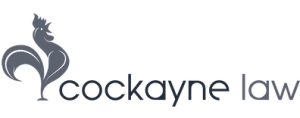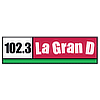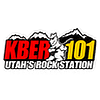Minor Utah Car Accidents: Small Crash, Smart Steps
A low-speed bump in traffic can feel simple, yet the fallout rarely is. You may be sore tomorrow, your bumper looks fine but costs a lot to fix, and the other driver’s story keeps changing. Utah has rules that shape what you can claim, how you prove fault, and when to get help.
This informative blog walks you through real-world steps after a small crash in Utah. You will learn from insurance basics to settlement talks. You will also learn what counts as a minor accident, when to file a police report, how no-fault PIP works, and when it makes sense to call a lawyer. Our aim is to guide you about the minor car accident process.
Key Points You Should Know
- Utah uses no-fault PIP for injury costs first.
- Report crashes with injury or high damage.
- The small claims limit is now twenty thousand dollars.
- The injury lawsuit deadline is four years.
- Property damage deadline is three years.
- Fault over fifty percent blocks recovery.
- Keep photos, bills, and all messages.
What counts as a minor car accident in Utah?
A crash is considered minor if the cars are drivable, the airbags did not deploy, and everyone is okay at the scene. Even then, hidden costs add up. Bumpers, sensors, and paint can push repair bills higher than expected. Soft-tissue aches often appear a day or two later. Because Utah is a no-fault state for injuries, your own PIP pays the first medical bills up to the minimum required coverage, then other options may apply.
Utah’s no-fault rules affect injury claims, not car repairs. You can pursue property damage from the at-fault driver’s insurer without meeting a medical threshold. That means photos, a repair estimate, and proof of fault still matter in a small crash.
Consult your doctor if symptoms return later and add those records to your file. Don’t wait until the last minute to organize, Utah’s deadlines are fast.
First steps after a small crash: a simple checklist
Safety, 911, and information swap
Move to a safe spot and turn on hazards. Check everyone for injuries. Immediately call 911 if someone is injured. Or if the vehicles are blocking traffic. Names, phone numbers, license plates, and insurance details should be shared. Information must be exchanged and, in some cases, authorities must be notified. When there is injury, death, or apparent damage at or above the state threshold, the Department of Public Safety may request a written report.
Photograph everything
Be sure to take wide shots of both cars. Also take the close-ups of damages, skid marks, road signs, weather conditions, and any visible injuries. You can take a picture of the other plate and VIN on the windshield dash if you can. If the other driver admits fault, write the exact words in your notes. Ask witnesses for a quick voice memo or contact.
Doctor first, then your insurer
Even in a small crash, get checked. Whiplash and concussions can be subtle at first. Tell your insurer about the crash within a reasonable time, start a PIP claim for medical bills, and keep a simple notebook of dates, pain levels, and missed work. Utah’s required PIP pays your early injury costs, and once certain thresholds are met, you may have more options.
No-injury minor accident claims: repairs, rentals, and diminished value
Property damage claims are fault-based
Utah’s no-fault system does not apply to vehicle repairs. If the other driver caused the crash, you can bring a claim against that driver’s insurer for your repair bill, rental car, and related costs. Get two estimates if possible, save towing and storage receipts, and ask the adjuster to confirm what is covered.
Diminished value in Utah
Even after a good repair, a car with a crash on record can be worth less. Utah law recognizes diminished value claims, though they can be hard to prove. Ask your body shop for repair notes, use market data, and consider a written appraisal if the drop in value is significant. File the claim with the at-fault insurer within the time limits.
When does a quick DIY claim make sense?
When there are no injuries, limited damage, and clear liability, many small property claims can be handled without a lawyer. Still, if the adjuster disputes fault, the estimate seems low, or delays stack up, search “lawyer near me for car accident” and compare reviews and local experience before you decide.
Proving fault in a minor car accident
Evidence that moves the needle
Photos, a clean timeline, and neutral witnesses are the backbone of a small claim. Add the police case number if officers respond. A clear rear-end impact usually points to the trailing driver, yet Utah uses comparative negligence, so both sides’ actions are weighed. If you braked for debris, note it. If the other driver was on the phone, ask officers to document it.
How Utah’s comparative fault rule works
Utah follows a modified comparative negligence rule. Your pay-out is reduced by your share of fault, and you cannot recover if you are 50 percent or more at fault. Example, if your repair losses are ten thousand dollars and you are 20 percent at fault, the most you can recover is eight thousand dollars. This rule applies in larger injury claims too. Keep evidence strong to keep your fault share low.
Tips for dealing with the adjuster
Be polite and brief. Share facts, not guesses. Avoid recorded statements until you are ready, and do not speculate about injuries in the first call. Confirm every agreement by email. If blame is shifting or the offer feels unfair, a short consult with a car accident injury attorney Utah residents know can help you reset the plan.
Minor fender-bender legal advice and typical settlement ranges
Small claims usually aim to pay for bumper repairs, paint, a short rental, and any quick medical checks. Every case is different, yet many minor settlements focus on hard costs first. For injury claims, Utah’s no-fault PIP pays the first layer of medical bills. To pursue pain and suffering against the at-fault driver, your case must meet the legal threshold, such as medical bills over three thousand dollars or certain serious injuries like disfigurement or a fracture.
Time limits that matter
Utah gives most people four years to file a lawsuit for injuries and three years for property damage, with shorter deadlines for claims against government entities. Filing an insurance claim early is smart, but do not let the lawsuit deadline pass if talks stall. Put a reminder on your calendar, save your proof, and ask questions early if the timeline feels confusing.
When to get help
Bring in help if liability is disputed, injuries start to add up, or the other insurer stops returning calls. A quick search for a lawyer near me for a car accident can help you compare options in your county. If you prefer a local team, Cockayne Law is a Utah firm that handles these cases and can walk you through next steps.
Small car accident claims and Utah small claims court
Is small claims a fit for your case?
A small claims court is designed for simple money disputes. In Utah, the limit is now twenty thousand dollars, not including court costs and interest. You cannot ask the court to order repairs or other actions, only money. This can be a good path for clear property damage cases with solid proof and a fair, recent estimate.
Filing basics
Gather your repair bills, photos, the estimate, and your notes. Name the right defendant, usually the at-fault driver, not their insurer. File in the right county and serve the papers properly. Many people settle before the hearing once they see your file is organized. If you win, the court enters a judgment that you can enforce. For questions on small claims rules, a short consult with a car accident injury attorney Utah residents rely on can save time.
Contact the best car accident injury attorney Utah can trust
Small crashes can turn into long hassles. Medical pain shows up late, repair delays drag on, and adjusters go quiet. When you want a steady hand, reach out to Chris Cockayne and his team at Cockayne Law. They help Utah drivers make sense of PIP, build clean evidence files, and push for fair results. You can ask about your options, time limits, and the best way to present your claim.
Whether you want help from the start or a second look before signing, they can step in and guide the process. If you searched for a lawyer near me for a car accident, you already know local knowledge matters. Talk with a car accident injury attorney Utah families recognize for clear answers, then decide the path that fits your case.
Final Thoughts
A small crash can still bring big headaches. Start with safety, photos, and a medical check. Use your PIP for early injury care, then look at the facts and the deadlines before you decide on next steps. For property damage, build a simple, proof-first claim and push for a fair check. If the facts are messy or the bills are rising, get guidance before you sign anything. One steady plan now prevents bigger problems later.
FAQs
How do I prove fault in a small crash?
Use photos from several angles, witness names, a clean timeline, and the police case number. Utah’s comparative negligence rule reduces pay-outs by your fault share, and blocks recovery at fifty percent or more, so strong proof helps.
What are typical settlement amounts for minor accidents?
They vary based on repair costs, parts delays, rentals, and any verified medical bills. Many small cases resolve for documented hard costs. If you pass Utah’s injury threshold, larger claims may include pain and suffering, but only if the facts support it.
What happens if the other driver’s insurer blames me?
Stay calm and stick to facts. Ask the adjuster to explain their reasoning in writing. Share your photos and witness details. If fault remains disputed, a car accident injury attorney Utah residents trust can review your file and advise you.
Can I claim diminished value after repairs?
Utah allows diminished value claims, though proof can be challenging. Support your claim with records, market data, and, if needed, an appraisal. File within the time limits set by Utah law.
Is small claims court a good option for a fender bender?
It can be. Utah’s small claims limit is twenty thousand dollars, which covers many repair disputes. Organized proof often leads to settlement before the hearing.
Should I search “lawyer near me for car accident” after a minor crash?
If no one is hurt and the insurer treats you fairly, you may handle it yourself. If injuries grow, fault is unclear, or talks stall, searching for a lawyer near me for car accident and comparing local experience is a smart move. A short consultation can save time and stress.









